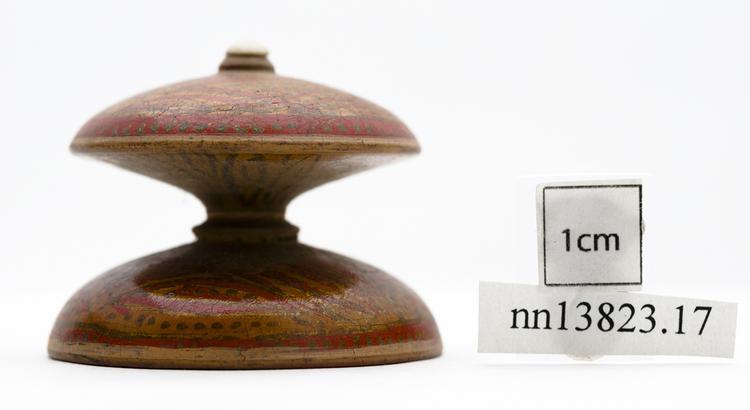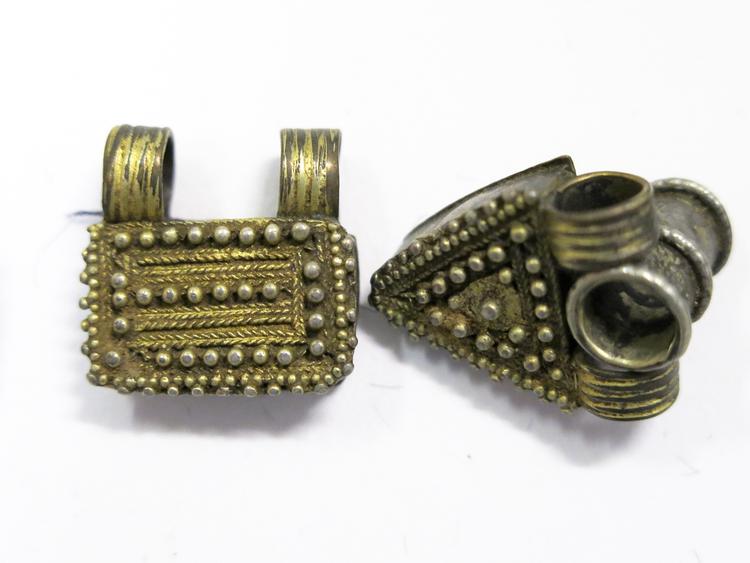Gandharan terracotta figure of an animal, possibly a humped cow. The figure has a missing leg, details on the face and a defined tail.
A humped bull (Bos indicus) figurine in coarse red terracotta, probably with a dark red slip, missing its rear right leg and the horns. It has a wide slit ‘smiling’ mouth, punched hole nostrils, pinched-out ears with a deep hole in each, eyes punched holes, each with an appliqué rim. The hump is high and prominent and the legs plain. The short tail is intact. The head rises to a sort of low fan-like projection forming a sort of small cup behind it. In the usual way, this bull figure is probably no more in function than a child’s toy. Bull figurines are found in profusion in sites in South Asia of almost all periods and are diagnostic in that fact. The importance of humped cattle in South Asia clearly cannot be overemphasized and it may be just possible to see it as the most important domestic (and ritual) animal of all time there, just as it has been into the recent period. The bull’s findspot is not labelled. Given the exclusively north Subcontinent exploration activities of Col Gordon, it will be safe to assume that it comes from a site either in what is now the new Khyber-Pakhtunkhwa province or Uttar Pradesh in India. Its inclusion in the nn1749x series along with clearly labelled figurines argues in favour of this object being included in the Gordon gift. Archaeological context: presumably unstratified and from a surface collection. Early Historic Period, late centuries BCE/early centuries CE. Given by Col. D H Gordon (1952/3).






